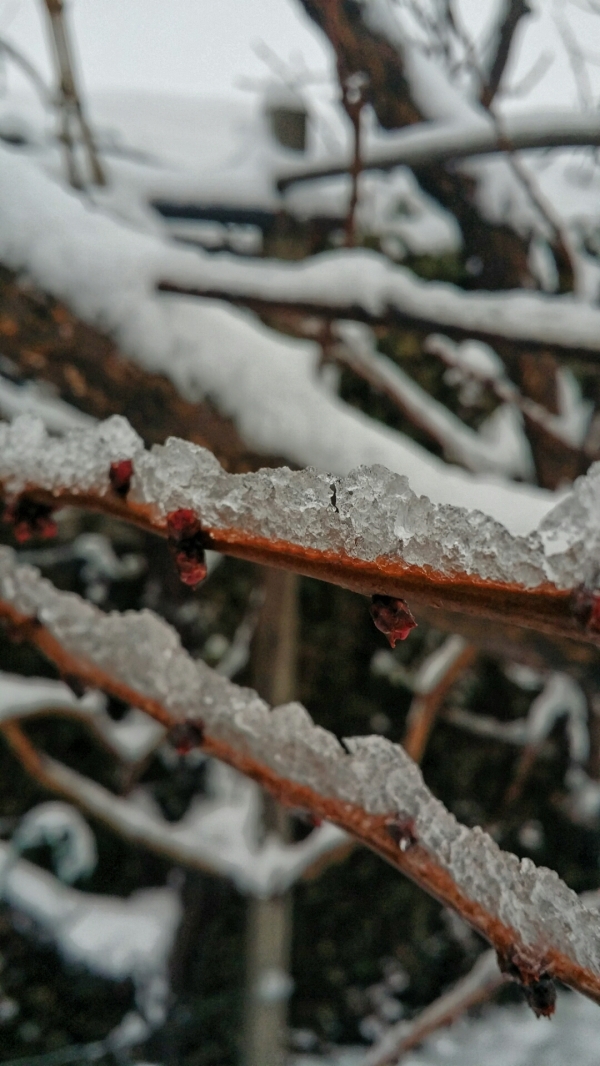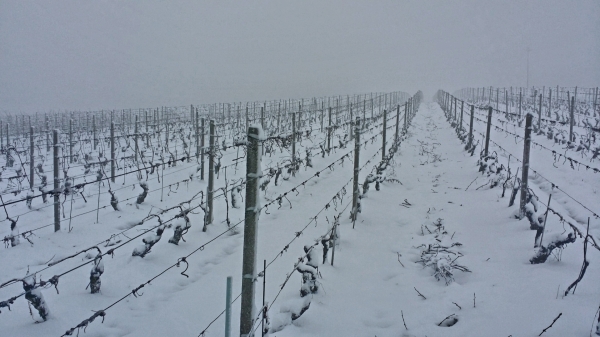Hunger under water. Bread under snow.
People ask me “are they alright under there?”
How can snow possibly harm them? Especially this year, after such a dry, mild winter, the first buds were starting to wake up.
Besides bringing water which, as it slowly melts, penetrates the water tables and enters the marl below, snow also increases the thermal inversion, meaning that it helps create an even greater difference between diurnal and nocturnal temperatures.
Lower temperatures are essential to naturally sedate insects, fungi and other parasites and to delay the start of vegetative development.
The vines don’t suffer. In actual fact they benefit from the cold to rebalance the vegetative cycle and the resting phase.
At this time of year, the plant’s lymph doesn’t course through the canes but stays safely inside the trunk, which acts as a natural form of insulation until spring.
And of course there’s also that famous Piedmontese saying: “Suta l’eua fàm, Suta la fioca pàn”. And my rough attempt at translation is… “Hunger under water. Bread under snow”
Mi hanno chiesto “ma loro li sotto stanno bene?”
La neve. Come può far male. Ancor più quest’anno che, dopo un inverno siccitoso e mite, si notavano già i primi risvegli delle gemme.
La neve oltre che apportare acqua che, sciogliendosi lentamente riesce a penetrare nelle falde e nella marne sottostanti, aumenta l’inversione termica cioè aiuta una più forte escursione termica notturna.
Quindi temperature più basse indispensabili per calmierare in maniera naturale insetti, funghi o altri parassiti e per ritardare la ripresa vegetativa.
Le viti non soffrono ma, anzi, si giovano del freddo per riequilibrare il ciclo vegetativo e la fase del riposo.
In questo periodo la linfa non scorre nei tralci ma rimane custodita nel ceppo che funziona da naturale isolamento termico in attesa dell’esplosione primaverile.
E poi é ormai famoso l’antico detto piemontese: “Suta l’eua fàm, Suta la fioca pàn.

















